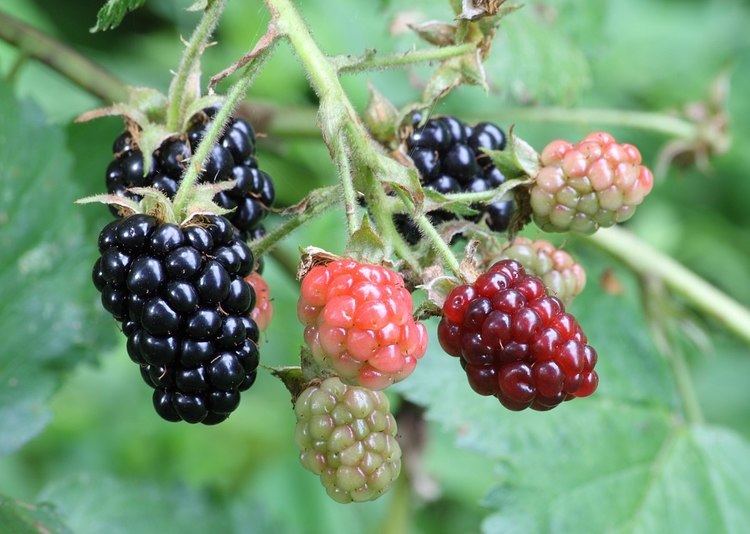 | ||
Ripening is a process in fruits that causes them to become more palatable. In general, a fruit becomes sweeter, less green, and softer as it ripens. Even though the acidity of fruit increases as it ripens, the higher acidity level does not make the fruit seem tarter. This is attributed to the Brix-Acid Ratio.
Contents
Ripening agents
Ripening agents speed up the ripening process.
They allow many fruits to be picked prior to full ripening, which is useful, since ripened fruits do not ship well. For example, bananas are picked when green and artificially ripened after shipment by being gassed with ethylene.
Calcium carbide is also used in some countries for artificially ripening fruit. When calcium carbide comes in contact with moisture, it produces acetylene gas, which is quite similar in reaction to the natural ripening agent ethylene. Acetylene acts like ethylene and accelerates the ripening process. Industrial-grade calcium carbide may also contain traces of arsenic and phosphorus which makes it a human health concern. The use of this chemical for this purpose is illegal in most countries.
Catalytic generators are used to produce ethylene gas simply and safely. Ethylene sensors can be used to precisely control the amount of gas.
Covered fruit ripening bowls are commercially available. The manufacturers claim the bowls increase the amount of ethylene and carbon dioxide gases around the fruit, which promotes ripening.
Climacteric fruits are able to continue ripening after being picked, a process accelerated by ethylene gas. Non-climacteric fruits can ripen only on the plant and thus have a short shelf life if harvested when they are ripe.
Some fruits can be ripened by placing them in a plastic bag with a ripe banana.
Ripening indicators
Iodine (I) can be used to determine whether fruit is ripening or rotting by showing whether the starch in the fruit has turned into sugar. For example, a drop of iodine on a slightly rotten part (not the skin) of an apple will stay yellow or orange, since starch is no longer present. If the iodine is applied and takes 2–3 seconds to turn dark blue or black, then the process of ripening has begun but is not yet complete. If the iodine becomes black immediately, then most of the starch is still present at high concentrations in the sample, and hence the fruit hasn't fully started to ripen.
Ripening stages
Climacteric fruits undergo a number of changes during fruit ripening. The major changes include fruit softening, sweetening, decreased bitterness, and colour change. Colour change is the result of pigments, which were always present in the fruit, becoming visible when chlorophyll is degraded. However, additional pigments are also produced by the fruit as it ripens.
In fruit, the cell walls are mainly composed of polysaccharides including pectin. During ripening, a lot of the pectin is converted from a water-insoluble form to a soluble one by certain degrading enzymes. These enzymes include polygalacturonase. This means that the fruit will become less firm as the structure of the fruit is degraded.
Enzymatic breakdown and hydrolysis of storage polysaccharides occurs during ripening. The main storage polysaccharides include starch. These are broken down into shorter, water-soluble molecules such as fructose, glucose and sucrose. During fruit ripening, gluconeogenesis also increases.
Acids are broken down in ripening fruits and this contributes to the sweeter rather than sharp tastes associated with unripe fruits. In some fruits such as guava, there is a steady decrease in vitamin C as the fruit ripens. This is mainly as a result of the general decrease in acid content that occurs when a fruit ripens.
Different fruit have different ripening stages. In tomatoes the ripening stages are:
List of ripening and non-ripening fruits
This is a list of fruits that are ripening and non-ripening after picking.
